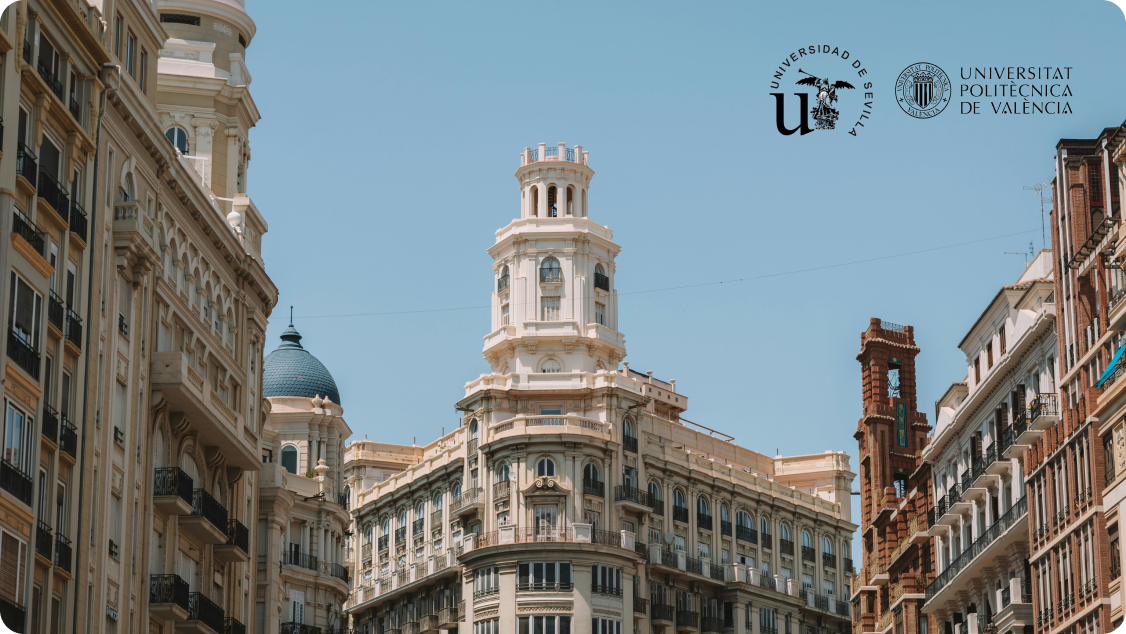Listen to the article

Preparing for future living conditions
As urban temperatures rise due to climate change, the need for climate-resilient design solutions in cities has become pressing. In a study published in Building and Environment, a team of researchers from the University of Seville and Valencia Polytechnic University, including Javier de Sola Caraballo, Victoria Patricia Lopez-Cabeza, Jorge Roa-Fernández, Carlos Rivera-Gomez, and Carmen Galan-Marin, selected ENVI-met from One Click LCA to create comprehensive 3D microclimate models and refine cooling strategies for a district in Valencia, Spain.
Case study: Enhancing cooling in Virgen del Carmen, Valencia
The study centered on Virgen del Carmen, a low-income residential area in Valencia constructed in 1960, exemplifying the Modern Movement architectural style. The Intergovernmental Panel on Climate Change (IPCC) warns that under the worst-case emissions scenario, temperatures could rise by up to 7°C by 2080, dramatically altering the local climate conditions these neighborhoods were originally designed for.
The challenge: Navigating microclimate complexity
Many of today's cities feature outdated buildings and urban spaces ill-equipped to handle increasing heat stress. Historically, urban design often lacked scientific assessment of how design choices impact microclimates and resident comfort. This gap is partly due to the complexity of accounting for numerous variables and interactions between atmospheric, climatic, vegetation, and human factors.
The researchers aimed to scientifically analyze the microclimatic behavior of a neighborhood representative of many Modern Movement developments in European cities from the last century, and create strategies to enhance climate resilience.
"Using tools like ENVI-met represents a significant step forward, providing scientific, data-driven analysis to clearly demonstrate design advantages. This approach leads to more efficient allocation of financial resources for both public administrations and private developers."
- Javier de Sola Caraballo, Department of Architectural Constructions at the University of Seville
ENVI-met from One Click LCA: Precise, adaptable, and user-friendly microclimate simulation
Using ENVI-met from One Click LCA, the team simulated the neighborhood's performance in its original, current, and future states under extreme climate scenarios. This comprehensive approach allowed for a thorough evaluation of how each design iteration responded to changing environmental conditions over time, with the primary goal of proposing improvements based on both historical performance and future projections.

ENVI-met from One Click LCA was chosen for its capability to model the multiple variables defining an urban microclimate, from building materials and solar analysis to vegetation and wind patterns. The software's versatility, coupled with its range of urban environmental analysis plugins, made it an ideal tool for assessing the real-world impact of green infrastructure on microclimate evolution.
Outcomes: Mitigating urban heat stress by up to 6.3°C
After reviewing numerous previous studies and conducting small-scale test iterations with ENVI-met from One Click LCA, the research team identified several passive cooling strategies to mitigate climate change effects in the neighborhood. These included implementing new cooling pavements, green structures, and shading devices. They also reduced traffic roads to create more pedestrian areas and replaced hard surfaces with heat-mitigation zones.

Simulations and analyses using ENVI-met from One Click LCA demonstrated that these proposed strategies could reduce the urban heat stress in Virgen del Carmen by up to 6.3°C on the Universal Thermal Climate Index (UTCI) scale, even in the worst-case scenario projected for the end of the century.

Data-driven urban climate solutions
By integrating One Click LCA's environmental impact assessments with ENVI-met's advanced microclimate simulations, architects, urban planners, and developers now have potent tools for designing climate-adapted, resilient urban spaces. This holistic approach enables more informed and effective decision-making in response to the pressing challenges posed by climate change.
Carbon Experts Newsletter
Industry news & insights — straight to your inbox
Want to learn more?
Roberta Belanova • Oct 03 2024
Asha Ramachandran • Aug 27 2025
Roberta Belanova • Oct 21 2024
Muhammad Ali Saleem • Oct 23 2024
